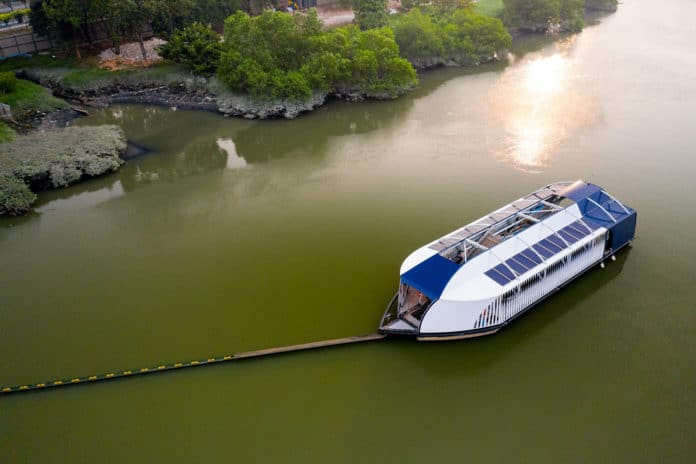Seven years ago, a Dutch inventor Boyan Slat introduced The Ocean Cleanup, which is now a world-famous project for cleaning the oceans. Now he presents a new floating device with which he wants to clean the thousand most polluting rivers. These rivers are said to be responsible for 80% of the plastic pollution in oceans.
The device, called the “Interceptor,” caches garbage in the river before it reaches the oceans. Developed by The Ocean Cleanup since 2015, it is environmentally friendly and 100 percent solar-powered, with built-in lithium-ion batteries that enable it to operate day and night without any noise or exhaust fumes.
How does this river cleaner work?
The floating device consists of an Interceptor vessel and a barrier that floats on the river. They are located on the river so that they do not interfere with river traffic. The barrier catches the trash and leads it to the opening of the vessel. There is a conveyor belt that continuously extracts the debris from the water and delivers the waste to the shuttle.
A shuttle automatically distributes the debris across six dumpsters. They can store 50 cubic meters of waste at a time, then empty them. When the Interceptor is almost full, it sends an automatic message to the local operators, and the containers are emptied on the river bank. The waste is then sent to local waste treatment facilities.
The Interceptor captures 50,000 kg of garbage a day. Under optimized conditions, it can capture up to 100,000 kg per day.
Four Interceptors have now been built so far. Two systems are already operational in Jakarta (Indonesia) and Klang (Malaysia). A third system goes to Can Tho in the Mekong Delta (Vietnam) and the fourth to Santo Domingo in the Dominican Republic.
According to The Ocean Cleanup, the new system for rivers is not harmful to animals. Together with partners, it would like to solve the plastic problem in 1000 most polluting rivers all over the world, by 2025.
